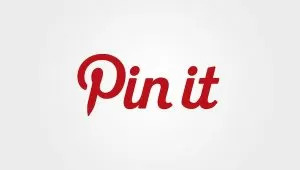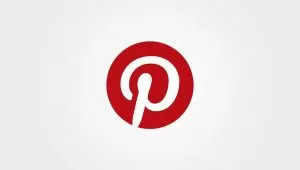Pinterest, the visual social network launched in March 2010, has evolved far beyond its humble scrapbooking and recipe-sharing origins. Advancements, such as “Rich Pins” and cross-platform sharing in Twitter and Facebook, plus the explosion in visual marketing in general, has dramatically increased Pinterest’s viability as a marketing tool and transformed it into a powerful means of reaching customers.

Today Pinterest has an estimated 150 million active users with 2 billion searches performed monthly. The platform has become particularly significant within the retail sector, where 55% of US online shoppers say that Pinterest is their favorite social media platform. 31% of online adults are on Pinterest, making it a platform that brands should be paying attention to for online success.
Who uses Pinterest?
Pinterest remains strongly dominated by female users, with 60% of new sign-ups on the platform being women, and 45% of online adult women using the site. The site has seen strong growth numbers among men, however. 2015 alone saw a 120% growth in male monthly users.
Most of the users, both men and women, tend to be younger, with 67% under the age of 40. Millennials in particular vouch for the benefits of the visual network, with 80% saying that they can use it to help them find things that they want to buy.
Overall, rich media draws the attention of people across multiple demographics. Videos and images have both seen strong growth numbers across all platforms with images serving as powerful motivators for engagement across all content types.
7 steps for optimizing your brand's Pinterest presence
1. Create and verify your business profile The first step for businesses wanting to leverage Pinterest is to create a corporate profile. Once you’ve created your brand’s profile, you’ll then need to verify your website. Doing so adds a “check sign” icon to your site’s images that shows Pinterest has officially confirmed your site. This can be done easily from your account’s settings page.

2. Add Pinterest buttons to your website Next, you’ll want to add the “Pin It” button to your site’s product or catalog pages and those landing pages that lend themselves to image sharing. You’ll also want to add the Pinterest “Follow” button to these pages, so your site’s visitors can readily track your Pinterest boards.


3. Take advantage of promoted pins Promoted pins look the same as regular pins, but they offer unique benefits for brands. They function essentially as native ad units, allowing you to display content to users for a price. Pinterest also offers promoted app pins, which allow users to download iOS apps straight from a pin without leaving the platform, making it easier for your users to take advantage of, thus leaving you with a higher return.
One-tap pins may also be an option. With these promoted pins, users who click on them are brought straight to where the content originated. This promotes engagement with your users by making it easy for them to find your original site and content.
4. Use Pinterest video Pinterest business users have reported strong results from the video options on the social media platform. There was a 60% increase in the videos over last year, and a study on the results found that the test group saw that promoted video ads provided 4 times the brand lift than non-video ads.
5. Create and optimize Pinterest boards You can think of Pinterest boards as virtual bulletin boards, each displaying a separate category of pictures aka “Pins” that represent your brand’s information or products.
As Pinterest’s Kevin Knight suggested on the company’s blog for businesses, you can approach boards either as a source of content distribution or as a destination for your content.
No matter your approach, a best practice is to create several boards focused tightly around specific topics for more targeted engagement with your followers. For instance, rather than just a “clothing” board, you would want to narrow it down to “work fashion” for one board and “casual fashion” for another.
You’ll increase both search visibility and user engagement by enriching the board titles themselves, adding keywords to the titles, and repeating them in board descriptions (within reason – avoid keyword stuffing). Elaborating on your boards’ descriptions make them far more compelling, as well.
Simply illustrated, a board title of “Healthy Recipes” with the description of “deliciously healthy recipes that make trying to lose weight a little less miserable,” conveys specific product benefits (and is far more search savvy) than a title of “Recipes” followed by a description of "Mmmmm… dinner."
6. Optimize your images First and foremost, start with high-quality images that are clear and represent your brand well. And, just as with Pinterest boards, a best practice is to optimize individual Pins by adding keywords to the image file name and description. Other image optimization tips include:
- Make Pins Twitter-friendly by adding a hashtag (#) to the image’s alt attribute (and further encourage cross-platform sharing by checking off the “Facebook” box as well)
- Add a URL back to your site or specific product pages, depending on the image and what it represents
- Limit the vertical height of the image to 5,000 pixels (although there is no limit to the size of images, those taller than 5,000 will require users to scroll down)
7. Leverage Rich Pins “Rich Pins” are designed to make your business stand out from your competitors on Pinterest. If you’re in ecommerce, you may consider employing Rich Pins so users can see the price and availability of a product right on the Pin itself.
Rich Pins work by including extra details on the Pins from your website. There are now five category (“board”) types supporting Rich Pins: movie, recipe, article, product, and place. There are three steps to enabling Rich Pins for your site:
- Add meta tags to your website (such as Schema.org or OpenGraph)
- Test your Rich Pins
- Apply to get them on Pinterest
More detailed information for website developers can be accessed by links provided on the Rich Pins page.
Bonus: Top 8 tips for Pinterest engagement
Just like any social network, you need a consistent publishing schedule to create an engaging experience. You also need inspiration to do so. Here are seven tips to get you started:
- Add Pins weekly from a variety of sources, and include new Pins and re-pins from Pinterest. Do a Pinterest search to see what people are pinning, and get ideas for what you might pin or re-pin
- Focus on creating Pins that empower users and facilitate re-pinning. There is a 42% higher click through rate for pins related to How-To guides and tutorials
- Create contests that engage your online visitors via Pinterest
- Find out what people have been pinning from your site, and learn which of your products or content is most popular. To find your source page, go to: pinterest.com/source/yourdomain.com
- Monitor trends in your industry, Pinterest pins see a 94 percent boost in click-through rates when they are applicable to trending topics
- Follow the “Pinterest For Business” board for new ideas
- Engage with your audience by re-pinning what they post and commenting on posts
- Include a Call to Action. Pins that contain a strong CTA will see as much as an 80% increase in engagement
And, for more information on leveraging Pinterest for your brand, check out its business and web developer pages as well as its business blog.
Learn more about VSO or Vertical Search Optimization.

